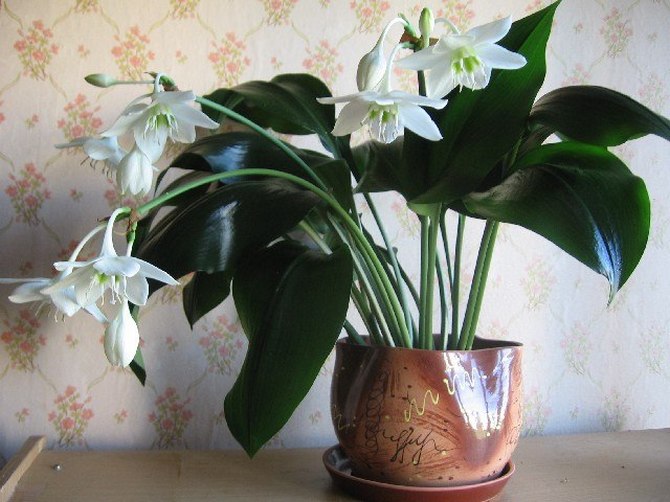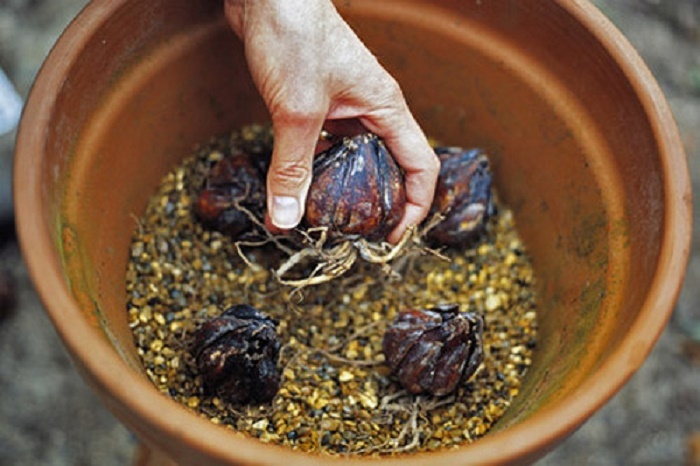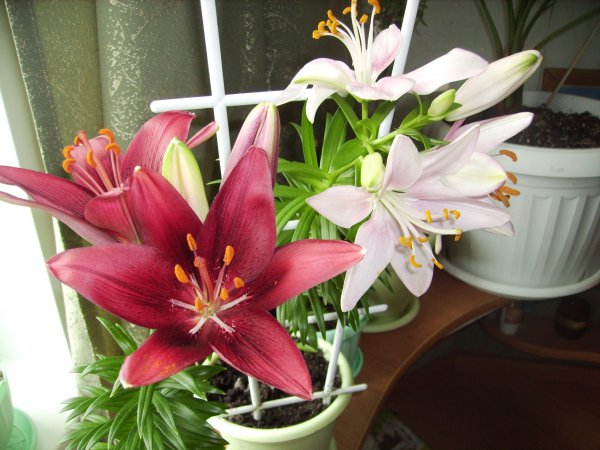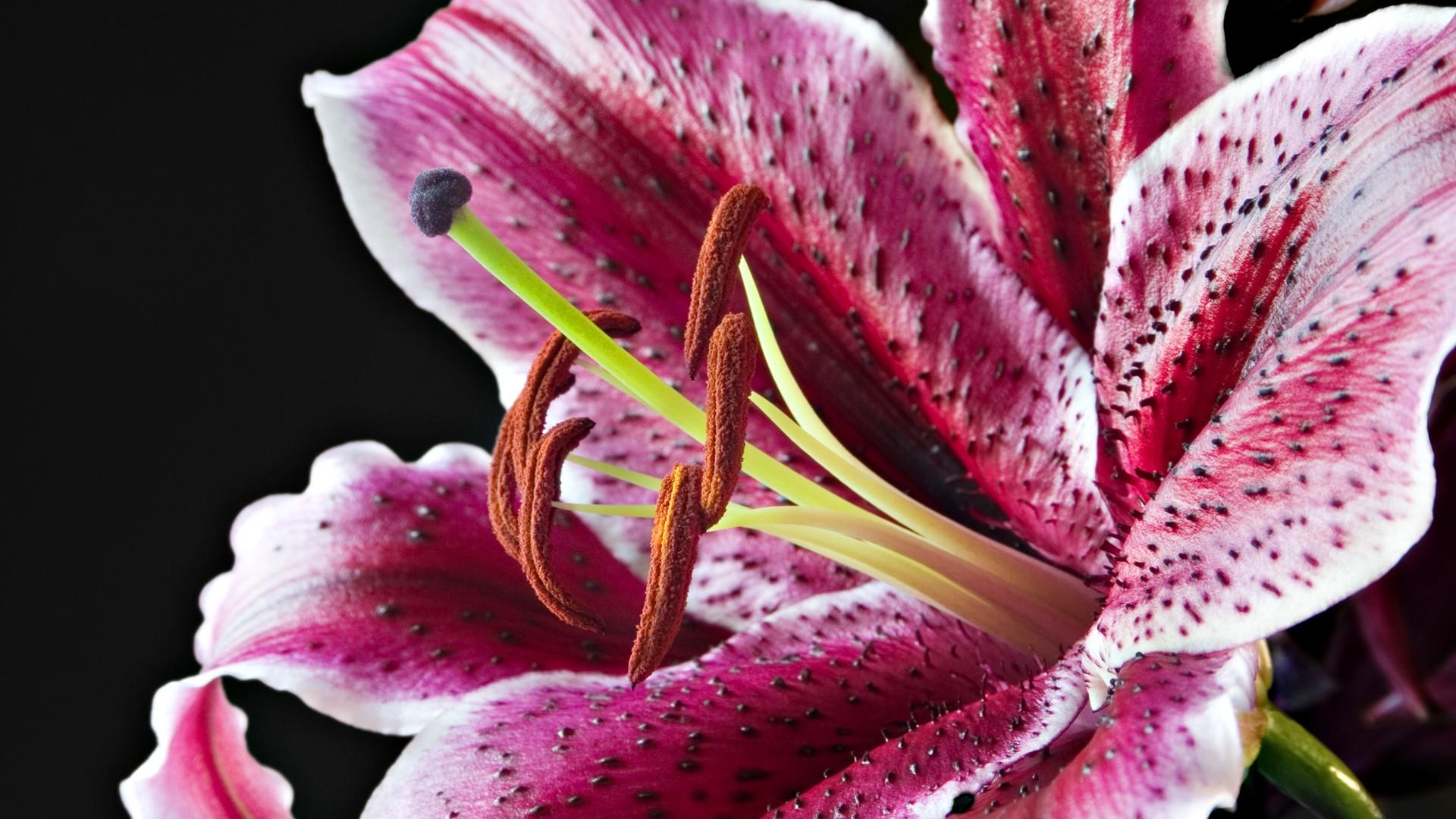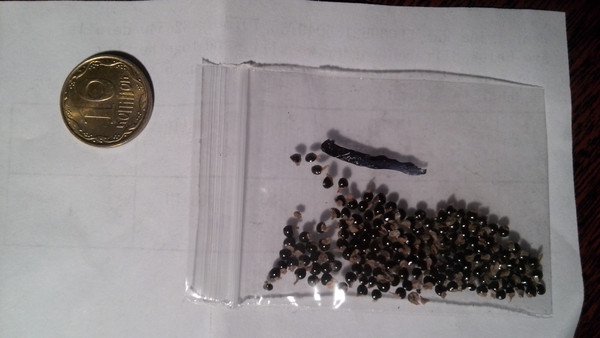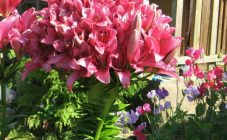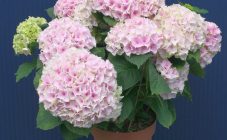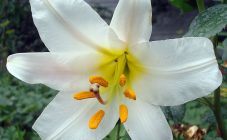Content:
Housewives often grow indoor or house lilies in their apartments. This is a very beautiful plant with a delicate pleasant aroma that does not require special care.
In ancient Greek mythology, white lilies are the flowers of the goddess Hera, the patroness of marriage, and in ancient Roman, Juno.
In Christianity, the lily is the flower of the Virgin Mary, it is considered the personification of purity and purity. Depicted on Orthodox icons, the lily is a symbol of Divinity. A straight stem meant intelligence, and drooping leaves meant humility.
Flower description
Lily is a perennial herbaceous bulbous plant that belongs to the Liliaceae family. Grouse, tulips and onions are considered related. There are a large number of species and varieties of this plant.
The homeland of the flower has not yet been determined, as it is found in the wild in Asia, North America and Europe.
Home lily is intended for growing in a pot. Bright, juicy green leaves combined with a sophisticated flower are a decoration for any home. It can be placed in residential and office premises, in winter gardens or on indoor windowsills. Everywhere the potted lily will organically fit into the interior.
Flowers are used for decoration in bouquets. The plant goes well in composition with other flowers.
The size, color, shape and number of flowers vary depending on the type of plant. On a long peduncle, a flower opens, which is red, white, orange and yellow. Lilies are also common and have a hue derived from these flowers. On the petals there may be specks or blotches of various shapes that are different from the main color.
It has shown itself to be excellent as a hemostatic, analgesic, wound-healing and anti-inflammatory agent. Alcohol tinctures are used for arthritis, osteochondrosis and radiculitis.
Plant characteristic
Bulb
It is in the bulb that the growing point and roots are located. They are round or egg-shaped. They consist of tiled scales. They are not closed and attached to the bottom located at the bottom of the bulb. They can be white, pinkish or yellowish. Bulb sizes range from 1 to 30 cm, depending on the species and variety.
The root system is of two types. The first type of roots grows from the bottom of the bulb. The second type is airy, located above the bulb. Aerial roots die off when the leaves and peduncles dry up.
Stem
Domestic lily has a simple or slightly branched, dense, straight stem that grows from the bulbous bottom. In indoor species, it is dark green and not very leafy.
Leaves
The leaves of the lily are mostly sessile, only in some species they are kept on petioles.
Their color is green. They look like plates that are located around the stem in a spiral or in a circle. Oval, lanceolate and linear leaves are distinguished in shape.
In the axil of the first lower leaf (from the bulb), a dark bud appears during the growing season, which gives rise to a new bulb.
Flower
Appears on the flowering stem after the bulb has finally gained strength. Its length can reach 1 m. 4-5 buds appear on it.
There are three main flower shapes:
- bowl-shaped;
- funnel-shaped;
- with bent petals.
Flowers are arranged singly or are grouped into inflorescences.
Depending on the variety, the size of a lily flower growing in a pot can vary from 10 to 16 cm, although there are also larger specimens.
The perianth has six free lobes or petals with bent tops and scalloped or even edges.
Artificial pollination is necessary for the reproduction of lilies in the home.
Fetus
If the flower is not cut, but allowed to bloom, then a box will appear in its place, which is a fruit. Inside it are triangular-shaped seeds. Each seed is covered with a papery or scaly skin.
Types of lilies
The following types of indoor lilies are grown at home:
- asian;
- oriental;
- American;
- curly, or martagons;
- snow-white, or candidum;
- tubular;
- long-flowered, or longflorum.
You can also find the following hybrids obtained as a result of crossing as indoor plants:
- la hybrids (long-flowered and Asian hybrids);
- lo-hybrids (long-flowered and oriental hybrids);
- orientations (oriental and tubular species).
These plants have the longest peduncle. The flowers are beautiful, have a peculiar color with specks of various shapes and colors.
Longflorum hybrids have a strong smell, but are moody. Therefore, it is recommended to grow them only indoors.
Tubular lilies have beautiful buds that are sometimes even more beautiful than the flower itself. For example, the bud of the Yellow Planets looks like a tropical banana.
Features of planting and care
Lily is an indoor flower that quickly takes nutrients from the ground, so it is recommended to replant it every year.
Bulbs are purchased from specialized stores or flower markets. So that the purchase does not disappoint, you must definitely check the quality of the purchased planting material. It should not be damaged, have rotten areas, be very loose.
If, nevertheless, brown spots were found on the purchased bulbs, then they are placed for half an hour in a 3% solution of karbofos.
Lily is a home flower, so it develops well only in light, fertile soil.
To grow a lily at home, you need to use a special soil. For Bulbs, you can purchase it at a specialty store or prepare it yourself.
To prepare the substrate, it is necessary to take in equal parts humus, sand and peat. Add 2 parts of turf or garden soil to this mixture. You can add mineral fertilizers to the prepared soil.
The size of the container in which the flower will be grown is of great importance for the start of flowering of the lily. In order for the lily in the pot to start blooming early, you need to choose a narrow and deep pot.
The optimal capacity is considered to be up to 20 cm in diameter.If you use large flower pots, then the flower will try to grow daughter bulbs in order to gradually occupy the entire capacity, while flowering will be postponed to a later period.
First, small stones are poured on the bottom of the container (you can replace with expanded clay), and on top - prepared earth. The ground level should be slightly below the top of the pot.
For disinfection, it is recommended to hold the bulb for a couple of hours in a solution of potassium permanganate.
Then it is washed, placed in the center of the pot and sprinkled with soil substrate 2/3 or 1/2 of its height.
Growing from seeds
Lily can be grown from seeds. However, in this case, it will take much longer to wait for the first flowers. This is due to the fact that the bulb must gain strength for full flowering. This can take 3-4 years.
Seeds quickly lose their germination, so they must be planted no later than the second year after harvest.
A soil substrate is prepared according to the same recipe as for planting bulbs.
Seeds are planted to a depth of 5 mm and covered with sand or soil.
Watering is carried out using a spray bottle. It is imperative to ensure that the earth in the container does not dry out.
From above, the landing can be covered with plastic wrap. This will create a mini greenhouse effect.
When the first shoots appear, the planting is moved to a place with a lower temperature. The optimum temperature during this period is + 12- + 20 ° С.
Bulbous plants, unlike other indoor plants, need a dormant period. At this time, the plant is resting and does not throw out peduncles.
It is important to take care of the flower not only during flowering, but also after it.
Flowering care
When the plant throws out a peduncle, then you need to tie it up so that the heavy flower does not break it.
The optimal conditions for development will be moist soil and moist air. Therefore, lily leaves are sprayed with water from a spray bottle. The earth is periodically loosened to increase air access to the roots.
If the plant is young, then some of the buds are removed. During flowering, you can do liquid dressing. The lily responds well to feeding with wood ash.
Usually summer is the time of flowering lilies, winter is the time of rest. However, the flowering period can be shifted. For this, the dormant time of the plant is regulated.
Post-flowering care
After the lily has faded, the peduncle is cut off, and the container with the plant is placed in a dry, dark and cool place. During this period, it is possible to transplant the plant into a new soil. The pot can be placed somewhere in a far dark corner where it will not get in the way.
It is important during this period to ensure that the bulbs do not dry out.
If you properly grow lilies at home in a pot, then the plant will delight the owners with abundant flowering at different times of the year.
